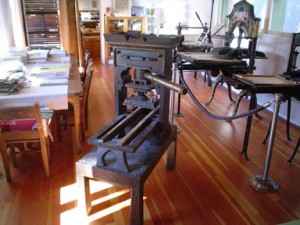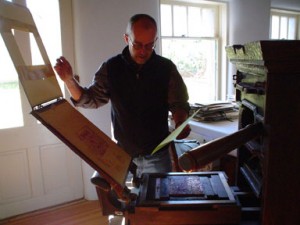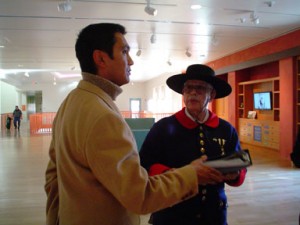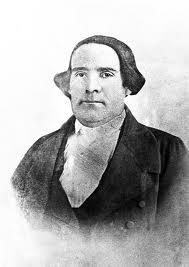Boxes filled with photographs, negatives and more line shelves that reach ceiling-high in the Palace of the Governors Photo Archives. To the three-person staff responsible for archiving the contents, the process must sometimes feel like bailing out the ocean with a bucket. At high tide.
So you can understand how mysteries might lie hidden for years, decades even. But the promise of a new discovery keeps the archivists pulling the boxes down, tugging open their lids and hunting through their contents.
Last May, Daniel Kosharek had one of those dreamed-of a-ha moments.

Navajo war chief Manuelito (seated) with another Navajo war chief, identified in the photograph as Cayetanito, ca. 1870s.
In a box holding part of the Henry T. Hiester/Melander Brothers Collection, Kosharek discovered a previously unknown photo of famed Navajo leader Manuelito, taken around 1870 and given to the archives 50 years ago. The photo graces the cover of the new edition of El Palacio, the scholarly magazine of the Museums of New Mexico, and is catching the attention of journalists across the nation. El Palacio carries a story about the discovery by Mary Anne Redding, director of the Photo Archives, and a sidebar by historian Charles Bennett Jr. on Manuelito’s history and lasting impact. An excerpt from Redding’s piece:
The Photo Archives is full of undiscovered treasures like the Manuelito portrait. With a collection of more than 800,000 images and an antiquated cataloguing system, which the current staff of three is rapidly working to update, there are wonderful gems still hidden away in boxes and cabinets, waiting to be discovered. … Each box is like a gift waiting to be opened on a special day.
Manuelito’s monumental role in Navajo life includes his 1866 surrender to the Bosque Redondo reservation (and his subsequent escape), an 1868 meeting with President Ulysses S. Grant in Washington, D.C., and an 1880 meeting with President Rutherford B. Hayes in Santa Fe. On the Navajo reservation, his name is carried by the Manuelito Navajo Children’s Home, the Manuelito Chapter House, and the Chief Manuelito Scholarship.
The photo Kosharek discovered shows Manuelito sitting beside another Navajo war chief identified as Cayetanito. Historians know of only a handful of Manuelito portraits, taken by photographers Charles M. Bell, George Ben Wittick, and possibly William Henry Jackson and John Gaige.
The History Museum has begun the process to put the “new” photo on display, perhaps in the permanent Telling New Mexico: Stories from Then and Now exhibition. Until then, you can get a gander at some of the archives’ holdings without even leaving your chair. Click onto the archives’ digitized collections, and you can keyword-hunt for the portion of images the staff has been able to upload. (Warning: Highly addictive Web site.)
You can also pick up the latest El Palacio for $8 at any of the Museum of New Mexico shops (Museum of Indian Arts & Culture, New Mexico History Museum, Museum of International Folk Art, and New Mexico Museum of Art), or for $10 (postage added in) by calling 505-476-1126 or e-mailing elpalacio@state.nm.us. Here’s a not-so-subtle hint: You can support scholarly research at our museums and deepen your knowledge of New Mexico’s art, history and culture by springing for a subscription. Do I hear jingle bells?

 Johannes Gutenberg would be so proud.
Johannes Gutenberg would be so proud. , the Bobcat could be – ahem – pressed into service as soon as Dec. 10 during the annual
, the Bobcat could be – ahem – pressed into service as soon as Dec. 10 during the annual 

